Richmond Palace, much loved home to the Tudors and once a stunning grand palace but sadly only a gatehouse remains today.
/What you see today is the Tudor gatehouse built in 1501 by Henry VII which began as a substantial manor house in 1125 and became a royal manor house in 1327. Important events involving key Tudors took place at Richmond Palace. Henry VII died here and in 1603, so did his granddaughter, Elizabeth I. Prince Henry, later Henry VIII, nearly lost his life here and his eldest daugther, Mary spent her honeymoon within its walls.
What can you see on a visit?
The Tudor gatehouse above with an information board that tells the story of Richmond Palace and has a brilliant drawing of how it might have looked in Tudor times. Looking through the gatehouse, you can see “Trumpeters’ House” built in 1702-4 , (a hundred years after the end of the Tudor period) which was built on the site of the Tudor middle gatehouse.
Above a close-up of Henry’s coat of arms with supporters, the Welsh Dragon and the Greyhound of Richmond (Henry VII was the Earl of Richmond). Restored in 1976.
Going through the arch you can see where three large door hinges carried a very strong and large door. This was the main entrance of the palace. Standing here in the 16th century, you would have seen all of the Tudor monarchs as well as at least three of Henry VIII’s wives.
You are allowed to walk into the courtyard but all the apartments here are private residences and so you are not allowed inside. Please respect the residents’ privacy. In Tudor times the building on the far right of this photo was not joined to the gatehouse.
This building on the left as you look from the arch was called the wardrobe. It was where all the soft furnishings were stored. The black arrows point out the fashionable “diapered” (diamond shaped) brickwork. This can also be seen at Hampton Court Palace. The red arrows point out the bricked up arches of the old ground floor arcade .
Above, a notice board opposite the entrance with loads of information on the history of the palace, an an amazing artist’s impression of what it must have looked like in Tudor times.
The red arrow points at the gatehouse.
The blue arrow points at the chapel.
The white arrow points at the great hall. Between the windows of the great hall were placed life-sized statues of various kings of England such as William Rufus (William II, son of William the Conqueror), Edward III and Henry V along with the legendary King Arthur and Brutus, the supposedly first king of Britain! In pride of place above the door was a statue of Henry VII. This arrangement linked Henry to all of these awesome leaders and added to his reputation as the “rightful and unchallengeable” claim to the English throne. Henry had to use every “trick in the book” to aggrandise himself and his family because of his fairly weak claim to the throne.
From Wikimedia Commons in the public domain.
The impressive view of Richmond Palace from the river Thames. Sadly, none of this exists today but it was a big statement about The Tudors at the time.
On the green you can see this notice board with a map showing some key details of the area along with my own multicoloured arrows. Blue shows the original Tudor palace gatehouse.
The Yellow arrow shows a house called Tudor place which was built in the 1650s on the site of the open tennis courts of the palace and later altered in the 1830s. Henry VIII, in his younger days, liked to play tennis. He had the choice of either a small or large court, as well as an indoor (called “close”) or outdoor tennis court (called “open”). Simon Thurly actually suggests that there was a kind of “Tennis Mania” at Henry’s court in the 1530s. At Bridewell, Henry challenged Emperor Charles V to a game which eventually turned out to be eleven games and diplomatically called a draw. Lesser opponents included George Boleyn, Anne’s brother, who beat Henry four times and gaining ten shillings a game!
The red arrow points out what is called “The Maids of Honour Row”. This is a terrace of four houses built in 1725 during the reign of King George I and was used to provide housing for the ladies in waiting of Princess Caroline (queen Caroline from 1727 when her husband George II became king) while she was staying at Richmond Lodge in Old Deer Park. Richmond Palace has long since been demolished except for the buildings that I have pointed out.
The black arrow is pointing in the direction of Friary Road which, as the name suggests, was the location of a friary founded by Henry VII but demolished in Henry VIII’s “Dissolution of the Monasteries”. Henry VIII had his short-lived first son, Prince Henry, baptised at the Friary.
The pink line points to the location of the shops and the High Street.
Above is a panoramic view of the Green. The red arrow points to the location of Richmond Palace Gatehouse. Back in Tudor times, there was a “tiltyard “ which was used for jousting. Henry VIII loved jousting and most of his palaces had an area set out for this rather dangerous sport. It was first used after the coronation of Anne Boleyn when Henry and Anne watched from the gatehouse.
A brief history of Richmond Palace.
Henry I
Before Richmond Palace was built, the area was part of the manor of Kingston until Henry I removed a section and named it the Manor of Sheen which he subsequently gave it to a Norman knight. The knight would have taken an oath of fealty for it and was obliged to support and fight for the king bringing with him several other knights. If he couldn’t fight, he would pay a large sum of money to the king to keep his land and his oath.
Edward I
By the time of Edward I, the manor was in the hands of a knight from Savoy, Otto de Grandson. Otto worked for Edward but on the king’s death, he left Sheen and so the manor went back into royal control. Sheen was now held by Edward II’s wife, Queen Isabella.
Edward III
Edward III
After Isabella’s death, her son, Edward III, took over extended the manor house. He created a house fit for a royal residence and thus it became known as Sheen Palace. In June 1377, Edward died and left Sheen to his grandson Richard II (Richard’s father, The Black Prince, had died earlier).
Richard II
Richard II
Richard and his queen, Anne of Bohemia, loved Sheen but when Anne died of the plague on 7th June 1394, Richard was so stricken with grief that he gave the orders to totally demolish it.
Henry V
Henry V
Under Henry V, Sheen was rebuilt. His aim was to construct a home for the triumphant Lancastrian dynasty. It was a “castle-like” building surrounded by three religious foundations. According to Simon Thurley: “these would put the monarchy at the heart of the spiritual life of the nation”. To the North of the house would be a Carthusian charter house of thirty monks whilst opposite would be a Bridgettine monastery for up to eighty-five monks and nuns. The third monastery was to be a monastery for the Celestines but never got built due to financial problems caused by war with France. Thurley suggests that “these were to be powerhouses of prayer for the king and his family, past present and future”. When Henry died suddenly, in 1422, all work on the project halted.
Henry VI
Building only resumed when the next king was eight years old. In 1445, the house was enlarged for the king’s marriage to Margaret of Anjou.
Edward IV
Edward IV
The Wars of the Roses meant that the Yorkist, Edward IV became the next king of England and he gave Sheen manor to his queen, Elizabeth Woodville. In 1483 Edward unexpectantly died, and when Henry Tudor defeated Edward’s successor Richard III at the Battle of Bosworth in 1485, Elizabeth gave up Sheen to the first Tudor monarch, Henry VII. Four months after the battle, Henry went on to marry Elizabeth’s daughter, Elizabeth of York. Through Henry, a Lancastrian, marrying Elizabeth of York, a Yorkist, both warring houses would now be united. Any offspring of this marriage would have the DNA of both houses and was the fulfilment of several years of plotting by Henry’s mother and mother-in-law.
Henry VII
Henry VII
In 1497 a terrible fire destroyed some of the wooden buildings including the chapel at Richmond and so Henry decided to rebuild the palace getting rid of the old timber framed buildings . Key buildings were now built out of white stone with several octagonal and round towers topped by pepper pot domes and cupolas. To take it to another level, a great hall, chapel a large outer courtyard and fountains were constructed. Each side of the courtyard were galleries with many windows showing a rather extravagant use of glass which was both rare and expensive. Inside, rooms were expensively decorated with tapestries, painted ceilings and walls decked with gold Tudor roses and portcullises. Henry’s claim to the throne of England was not strong and so he needed to demonstrate that his magnificence, the richest aristocrat in the land, far beyond anyone else. It would show he was the rightful king and unchallengeable. He had to be. Surrounding the palace was a deer park, a key requirement of a royal palace and for the Tudor monarchs in particular. Henrys VII and VIII principal recreation was deer hunting and it was also an activity in which they could bond with their guests. Added to this was a name change in 1501 to “Richmond Palace”, the name taken from Henry’s former title, the Earl of Richmond. This name change spread to the surrounding area and hence today, it is in the Borough of Richmond. Also in 1501, royal wedding celebrations took place at Richmond for the wedding of Prince Arthur, Henry’s eldest son, to Catherine of Aragon. In April 1509, Henry died at Richmond, a contented man who had set up a dynasty that was to last over 100 years.
Henry VIII
In 1507, the young Prince Henry was lucky to live long enough to become king when the galleries collapsed that he had just walked through. Henry became king in 1509 but, unlike his father, he never fell in love with the palace preferring Hampton Court after Cardinal Wolsey relinquished it. Having married Catherine of Aragon in 1510, great celebrations were held at Richmond for the christening of his first son, Prince Henry. Sadly, within a month, Prince Henry had died and Henry’s quest for a son to inherit his throne began once more. It later gained the reputation of being the home for discarded queens, firstly for Catherine of Aragon and her daughter Mary and later for Anne of Cleves as part of her divorce settlement.
Elizabeth I
Mary and Elizabeth.
Henry’s daughters, however, did love Richmond Palace, with Queen Mary even taking her honeymoon there. It was at Richmond that Mary stayed during the funeral of her brother, King Edward VI and soon afterwards, was the place where Elizabeth was on her knees in front of Mary, explaining her religious views and offering to take instruction in “Roman Catholic rites”. Elizabeth particularly liked spending the winter months there, possibly because it was warmer there with the compact nature of the privy lodgings compared to larger palaces like Hampton Court. Elizabeth liked to spend Christmas at Richmond and to watch plays performed by London companies including one Mr William Shakespeare. She also loved to hunt Red Deer in the deer park next door. On March 24th 1603, Elizabeth eventually died in her beloved Richmond.
James I and Charles I
James I preferred Westminster Palace to Richmond and so gave Richmond to his eldest son, Henry. Henry died before much work could be done to it and so it then went to Prince Charles, the next in line. When Charles became king, it was used by his children until the English Civil War.
Oliver Cromwell
Charles lost the Civil War and was executed in January 1649. As a symbol of monarchy, parliament decided to sell off the the various sections of the palace and its building materials. This process saw the destruction of the stone buildings such as the chapel, hall and privy lodgings. Only the brick buildings were left.
Charles II and James II
In 1660, the monarchy was welcomed back and Charles II was crowned. He passed the remains of Richmond Palace on to his brother and heir James. Also in residence were Mary, who eventually became Queen Mary II, and Anne who likewise became, Queen Anne. As Richmond fell into further disrepair, more buildings were taken down and new houses were built in their place. Further change occurred in 1724-5 when the “Maids of Honour Row” were built next to the remaining gatehouse facing the green (see map of the green).
Essential information.
Getting there.
By car
Park at Old Deer Park and walk about 10 minutes to the green. Use Google maps for the green and my map of the green to see the gatehouse in the far corner. There are other car parks but they all get full very quickly and are not cheap. Driving there late morning or in the middle of the day is not a good option.
By train.
Richmond has good underground and overground train links. A walk from the station is about 7 minutes.
Follow us on social media
Articles that may interest you.


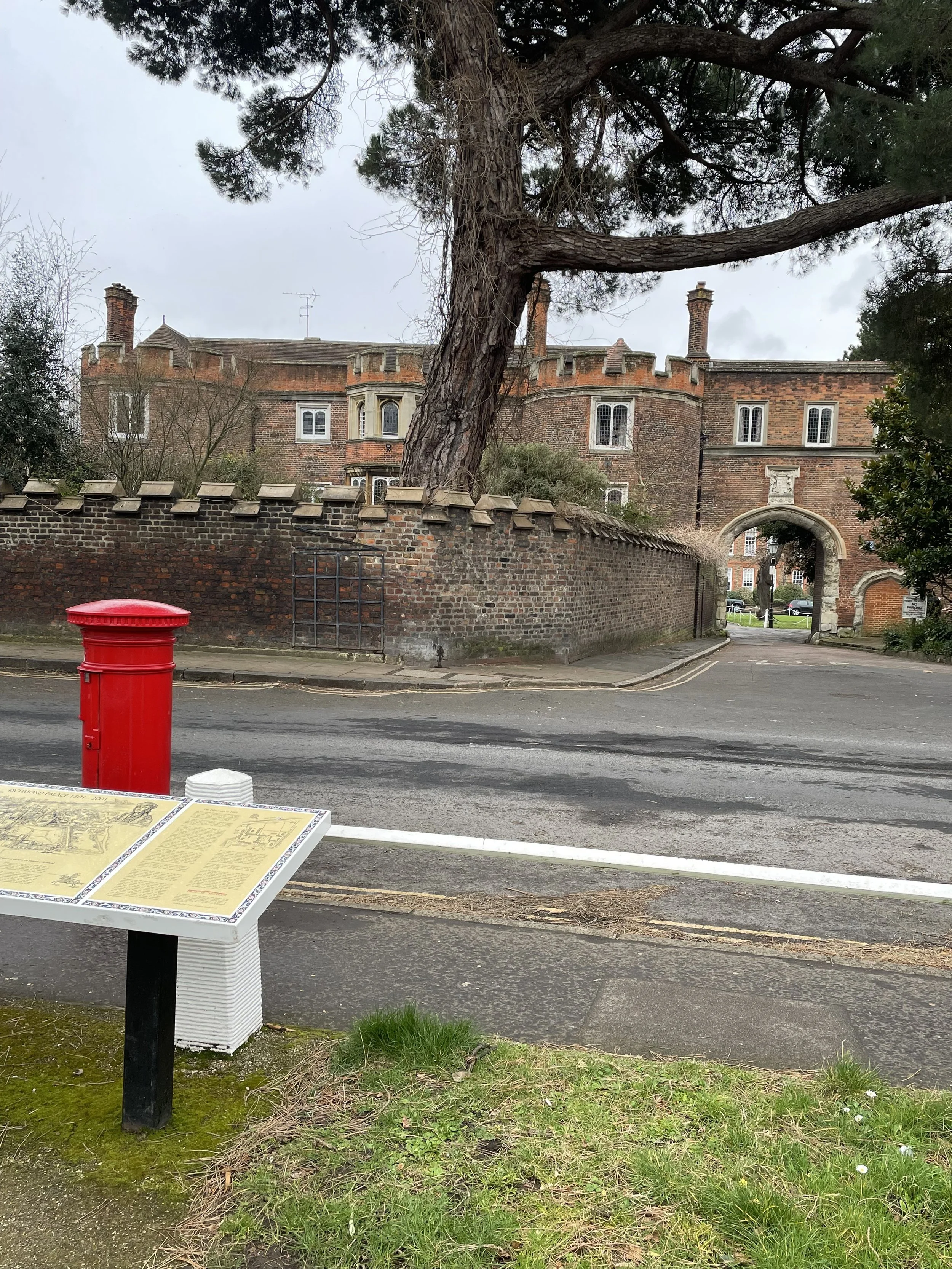


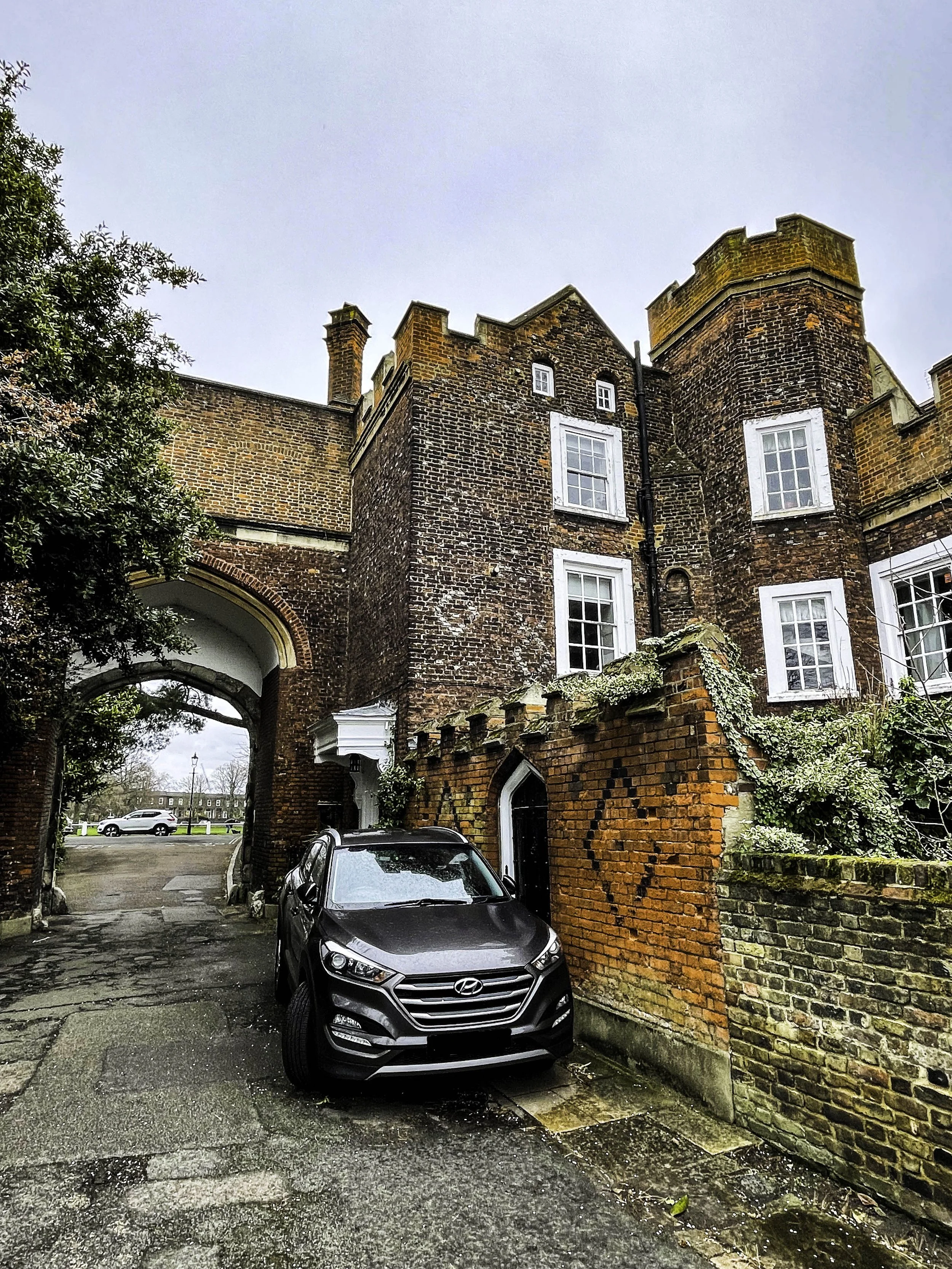


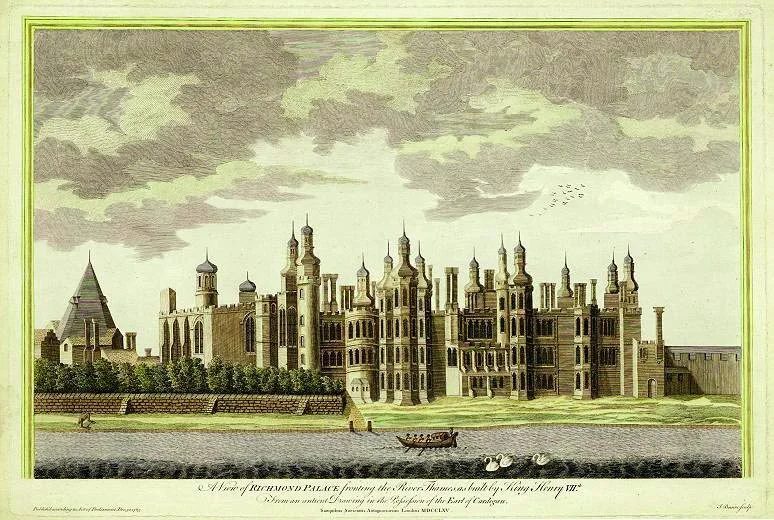
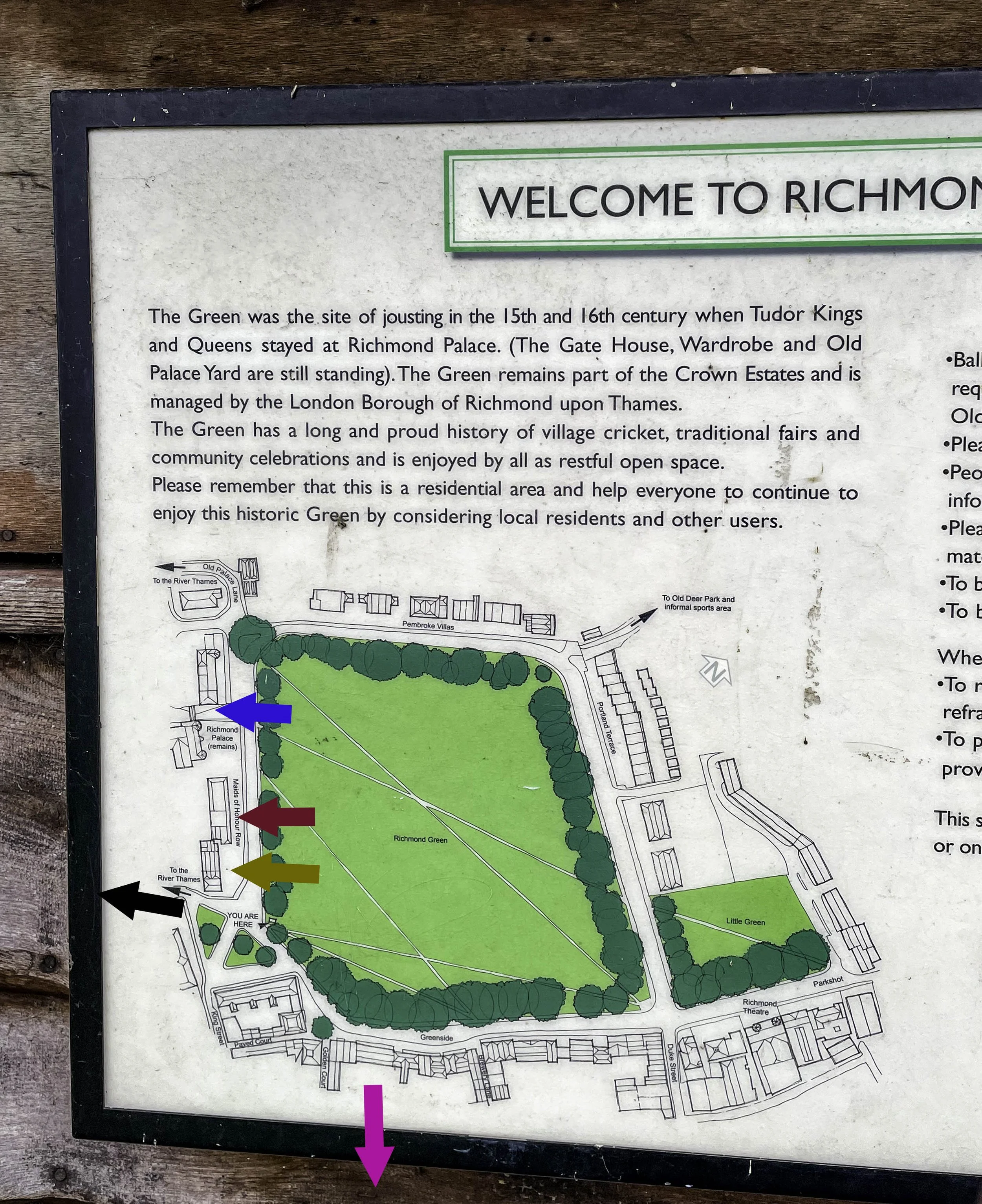


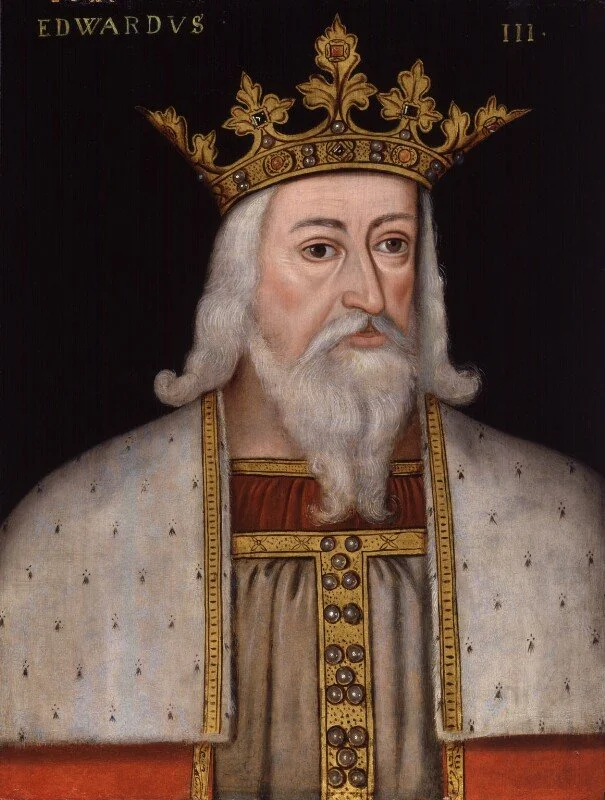
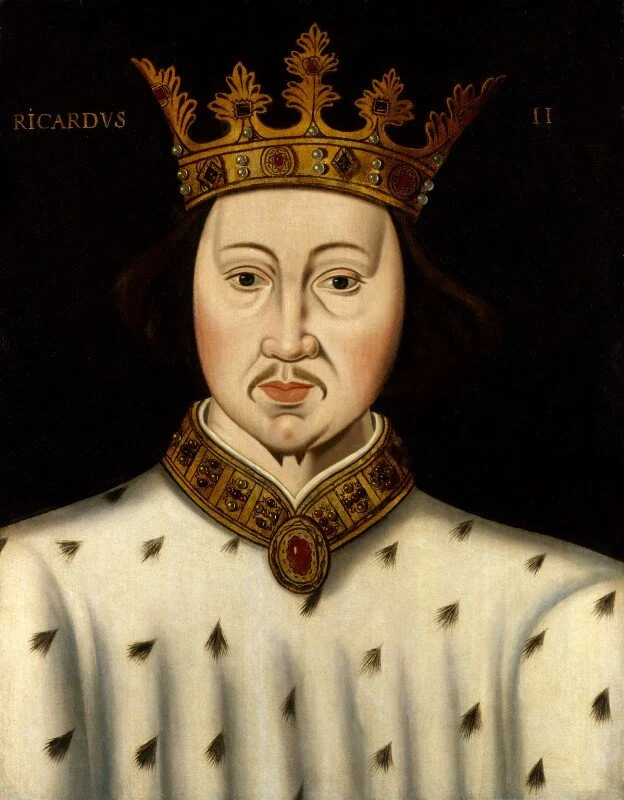

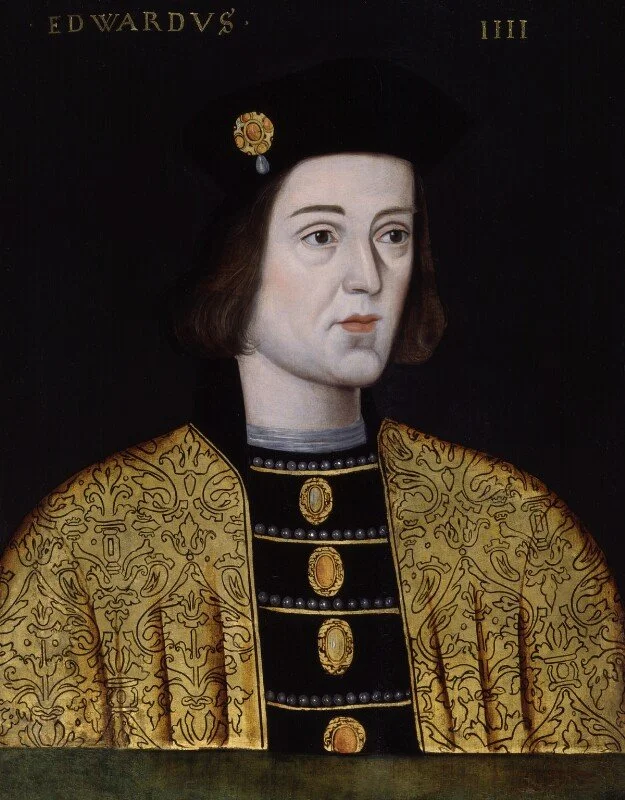













A day’s wandering around this area of Coventry will present you with hundreds of years of history to discover. You will be able to visit the ruins of the 14th and 15th century church of St Michael that became a cathedral in 1918 as well as the new one next door.. About 160 metres away or a two minute walk, is Holy Trinity church with its amazing Medieval “Doom Painting” which some people believe is the best one in Britain. One minute away, is the wonderful and free Herbert Art Gallery and Museum.